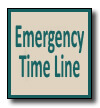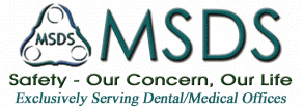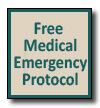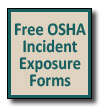Who We Are
We are MSDS, Medical Safety Developmental Services.
We lecture on OSHA guidelines, train under American Heart Association, research and consult on Board of Dentistry code violations and regulations, and HHS on HIPAA regulations and FAQ. In order for you to understand MSDS, you have to understand OSHA, AHA, Board and HHS.
OSHA – Occupational Safety and Health Administration:
The Occupational Safety & Health Administration (OSHA) is a federal agency that has been misunderstood since it was created in 1970. Many small business owners cringe when they hear an employee threatening to report them to OSHA. But if you stop thinking about OSHA as your enemy and start seeing them as your partner in business, your outlook on this subject will change.
OSHA’s mission has always been the same: to make sure that the safety and health concerns of all American workers are being met. The agency has developed specific workplace standards and polices businesses to make sure these standards are being met. It also provides training and educational programs for small business owners and corporations and works to establish partnerships geared toward improving workplace safety and health.
According to OSHA, the agency’s mission is to assure the safety and health of America’s workers by setting and enforcing standards; providing training, outreach, and education; establishing partnerships; and encouraging continual improvement in workplace safety and health. Through a network of some 2,100 inspectors, as well as complaint discrimination investigators, engineers, physicians, educators, standards writers, and other technical and support personnel, the agency is well equipped to fulfill its lofty mission. There are more than two hundred OSHA offices that monitor workplace safety and health issues located throughout the United States.
According to OSHA, an effective workplace safety and health management system at a small business work site(s) will enable the small business owner to:
* Recognize and remove hazards from the work site
* Protect an employer’s workers from injury and illness
* Prevent loss of life at an employer’s work site
* Cultivate informed and alert employees who take responsibility for their own and their coworkers’ safety and for workplace safety as a whole
* Improve employee morale
VIRGINIA BOARD OF HEALTH PROFESSIONS
DEPARTMENT OF HEALTH PROFESSIONS: Board of Dentistry
The Board of Health Professions is a largely advisory body within the Department of Health Professions authorized by the General Assembly with specific powers and duties listed in §§54.1-2500, 54.1-2409.2, 54.1-2410 et seq., 54.1-2729 and 54.1-2730 et seq. of the Code of Virginia.
What is BHP’s authority?
I. To evaluate, advise, and assist in promoting coordination and resolving conflicts. More specifically, to evaluate the need for coordination among the health regulatory boards, to serve as a forum for resolving conflicts among health regulatory boards, to examine scope of practice conflicts among professions, and to advise the boards and General Assembly of the nature and degree of such conflicts.
II. To study matters relating to the regulation or deregulation of health care professions ,including whether or to what degree a particular profession should be regulated and to advise the Department Director, General Assembly, and Governor accordingly.
III. To facilitate communication with the public. To provide a means for citizen access to the Department, a means for publicizing the policies and programs of the Department, and to generally educate the public and elicit support for Department activities.
IV. Review agency activities. Have access to Departmental information so that it may monitor the policies and activities of the Department. And, as part of this, to periodically review the investigatory, disciplinary, and enforcement processes of the Department and the individual boards to ensure public protection and the fair and equitable treatment of health professionals.
V. Practitioner Self-Referral Act (1994)To receive, review, and forward to the appropriate health regulatory board any investigative reports relating to complaints of Practitioner Self-Referral Act (PSR) violation, and to determine compliance with, violations of, and grant exemptions to PSR and take appropriate action against entities, other than practitioners, for violations.
VI. To promote the development of standards to evaluate the competency of the professions and occupations represented, and to make bylaws for its own governance.
Department of Health Professions and their primary roles? The chief role of the members from the health regulatory boards is to bring their subject-matter expertise and perspectives as health care providers to the Board to assist in conducting policy reviews. The five citizen members offer their unique perspectives to this effort as health care consumers and as informed members of the general public.
AHA – American Heart Association
The American Heart Association’s Emergency Cardiovascular Care (ECC) Programs deliver a dynamic message of hope — the hope of saving lives. New treatments have improved the possibility of survival from cardiovascular emergencies, cardiac arrest, and stroke. These new treatments offer the hope of improved quality of life for people who suffer these events. Increasing public awareness of the importance of early intervention and ensuring greater public access to defibrillation will save many lives. ECC programs train more than 9 million people every year by educating healthcare providers, caregivers, and the general public on how to respond to these emergencies.
ECC Mission
The ECC Programs Department is responsible for implementing program initiatives, and providing guidance and support to the ECC Training Network. The ECC Mission supports this responsibility.
The Mission of the American Heart Association’s ECC Program is to reduce disability and death from acute circulatory and respiratory emergencies, including stroke, by improving the chain of survival in every community and in every health care system.
ECC Guiding Philosophy
• Improve the Chain of Survival in Every Community
• Increase Quality, Timeliness of Materials
• Identify, Expand Training
• Document Effectiveness
• Improve Efficiency
HHS – Health and Human Services;
To improve the efficiency and effectiveness of the health care system, the Health Insurance Portability and Accountability Act of 1996 (HIPAA), Public Law 104-191, included Administrative Simplification provisions that required HHS to adopt national standards for electronic health care transactions and code sets, unique health identifiers, and security. At the same time, Congress recognized that advances in electronic technology could erode the privacy of health information. Consequently, Congress incorporated into HIPAA provisions that mandated the adoption of Federal privacy protections for individually identifiable health information. HHS.gov administers HIPAA through Office for Civil Rights (OCR) and Other HIPAA Administrative Simplification Rules are administered and enforced by the Centers for Medicare & Medicaid Services, and include:
- Transactions and Code Sets Standards
- Employer Identifier Standard
- National Provider Identifier Standard
The Enforcement Rule provides standards for the enforcement of all the Administrative Simplification Rules.
All of the HIPAA Administrative Simplification Rules are located at 45 CFR Parts 160, 162, and 164.



